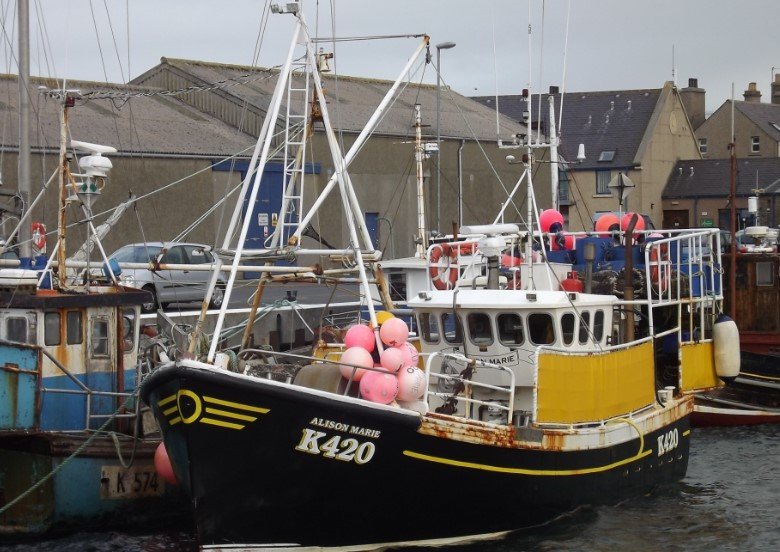Shefa eyes full restoration by next weekend after suspected fishing vessel damages subsea link
A repair ship is finally on its way to mend the severed internet lifeline between Orkney, Shetland, and mainland Scotland. For thousands of islanders who’ve faced patchy signals and digital silence since early Saturday morning, there’s cautious optimism in the air.
The break — located around 5.5 miles off Orkney — has disrupted broadband services, raising serious questions about the vulnerability of remote communication infrastructure. The Faroese telecoms firm Shefa, which operates the cable, believes a fishing boat likely caused the damage.
Cable break leaves digital shadows in island homes
It started just after 3:00 a.m. on Saturday. Phones stopped syncing, streaming halted mid-buffer, and small businesses relying on cloud systems were thrown into tech limbo.
The initial concern was severe. Estimates feared up to 10,000 customers could be affected across Orkney and Shetland. Thankfully, redundancy systems kicked in — and by Monday, most residents saw some level of service return. Still, many have been stuck in a frustrating mix of slowdowns, outages, and jittery connections.
One-line paragraph? Here you go:
“It felt like we were back in the ’90s,” said Stromness café owner Lorna Fraser. “No card payments, no emails, no music — just me and my espresso machine.”
Fishing gear suspected in severing vital connection
So, what actually caused the break?
Páll Vesterbø, a spokesperson for Shefa, said all signs point to a passing fishing vessel. The company hasn’t pinned down a specific boat yet, but they’re pretty confident the damage was “most likely” due to trawling equipment scraping the cable.
To prevent another blackout, Vesterbø is calling for:
-
Fishing boats to steer clear of marked cable zones
-
Mandatory use of Automatic Identification System (AIS) so vessels can be tracked
-
Stronger marine coordination with telecom firms in shallow sea corridors
And here’s where it stings: the cable isn’t buried deep in certain places — a legacy of older planning in relatively calm Scottish waters. As fishing boats operate closer to shore, the risk of snagging infrastructure grows.

Repair vessel en route, but conditions matter
Shefa said the repair vessel would reach the break site this week, weather permitting. Once on site, engineers will assess the cut and determine how best to splice the fibre-optic strands. If all goes well, the internet link could be fully restored by the weekend.
But — and it’s a big but — the sea around Orkney is known for surprises.
Fog, choppy tides, or even high winds could delay the repairs. The vessel has a tight operational window.
Vesterbø didn’t mince words. “We aim to fix it this week, but we can’t beat the weather. Safety comes first.”
Impact on local economy and services
Beyond personal inconvenience, the outage has real economic consequences.
Many island-based artisans, tour operators, and small firms depend on fast broadband for bookings, orders, and marketing. The Shetland tourism board had to temporarily halt some virtual services. NHS systems also experienced minor disruptions — though emergency services remained online.
Even council staff weren’t spared. Remote workers across Kirkwall and Lerwick reported log-in failures and delayed communications. The digital gap added an extra layer of stress to an already stretched public sector.
Let’s look at this with a quick breakdown:
| Area | Service Disruption Level | Estimated Users Affected |
|---|---|---|
| Orkney | Moderate | ~2,000 |
| Shetland | Low to Moderate | ~1,500 |
| Mainland Scotland | Minimal | <500 |
One telecom engineer working on backup systems in Kirkwall described it bluntly: “We’re not down, but we’re limping.”
Cable security still lags behind technology
The Orkney-Shetland cable hiccup isn’t an isolated case.
Subsea cables globally face accidental damage from fishing, shipping, and natural movement. While the tech inside these cables is modern, the protocols for protecting them haven’t caught up.
In 2022, another cable linking Shetland to the Faroe Islands was damaged, causing a similar scare. That repair took days and cost hundreds of thousands of pounds. The pattern is worrying.
One former BT engineer, who asked not to be named, said, “These cables are like the arteries of the islands — but they’re still exposed like bones in a playground.”
Calls for tougher maritime safeguards grow louder
So what’s next?
Island councillors are now demanding stronger protections. There’s talk of new legislation requiring fishing vessels to install live cable mapping on navigation systems. Others want more physical fortification — including burying shallow cables deeper or armouring them against trawls.
But Shefa’s Vesterbø says it’s not only on the telecom firms.
“There has to be a mutual respect between the fishing industry and telecom operators. We share the sea — but that means we also share the responsibility.”
One sentence paragraph again:
So far, the UK government has not responded to calls for updated cable protection laws.
Island life interrupted — but not defeated
If you ask locals, they’re taking it on the chin — as islanders usually do.
People have adjusted. Some switched to mobile hotspots. Others simply paused their screen time. And for a few, the break offered something weirdly nice: a digital pause.
“We lit candles and played Scrabble,” said Birsay resident Donald McKay. “It was kind of peaceful — until I realised I couldn’t watch the football highlights.”
The week’s events have stirred more than irritation. They’ve reignited a broader discussion about how 21st-century digital needs often collide with century-old maritime habits. And how, in places where ferry timetables still shape daily life, a single broken cable can suddenly feel like a full-blown emergency.








